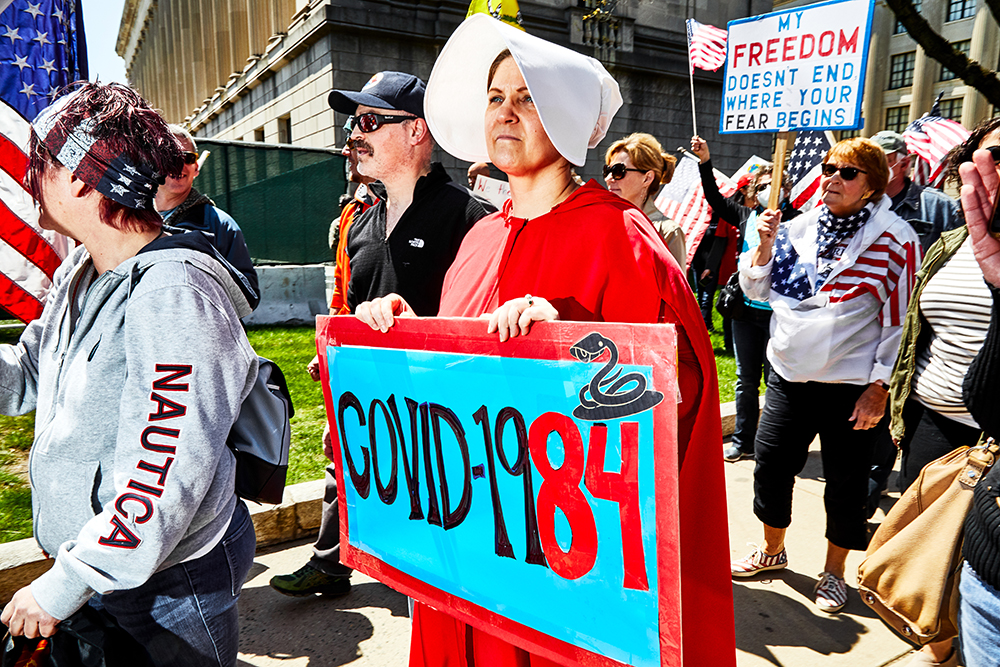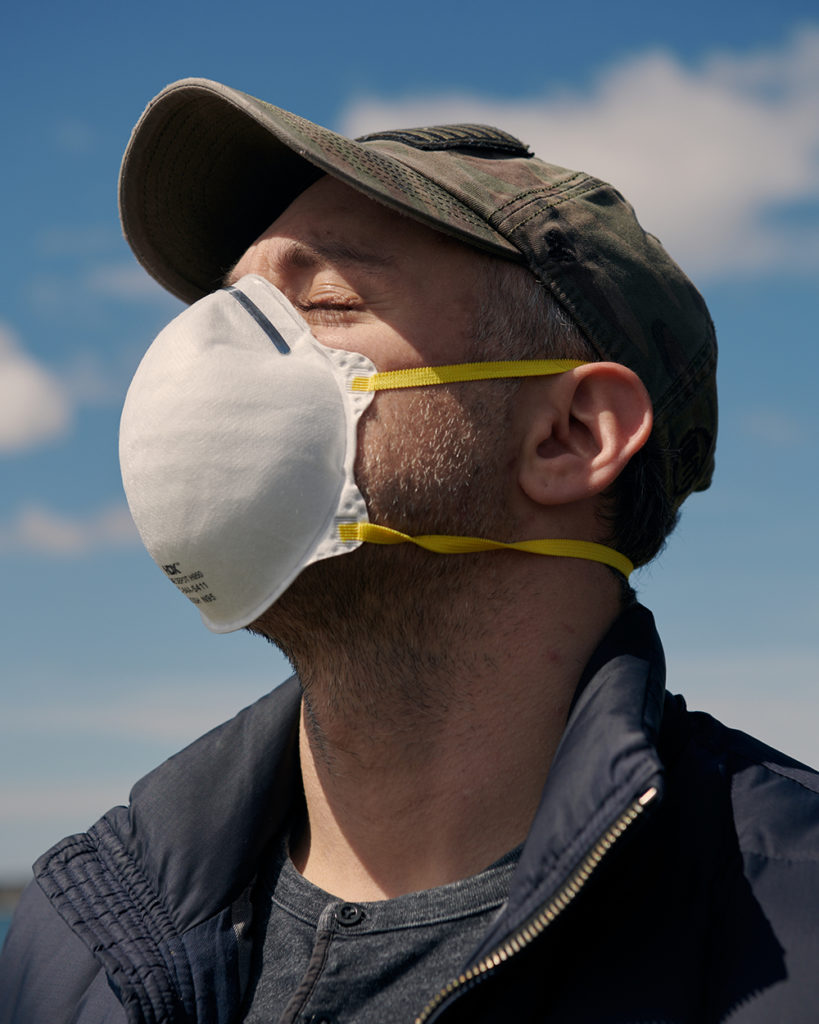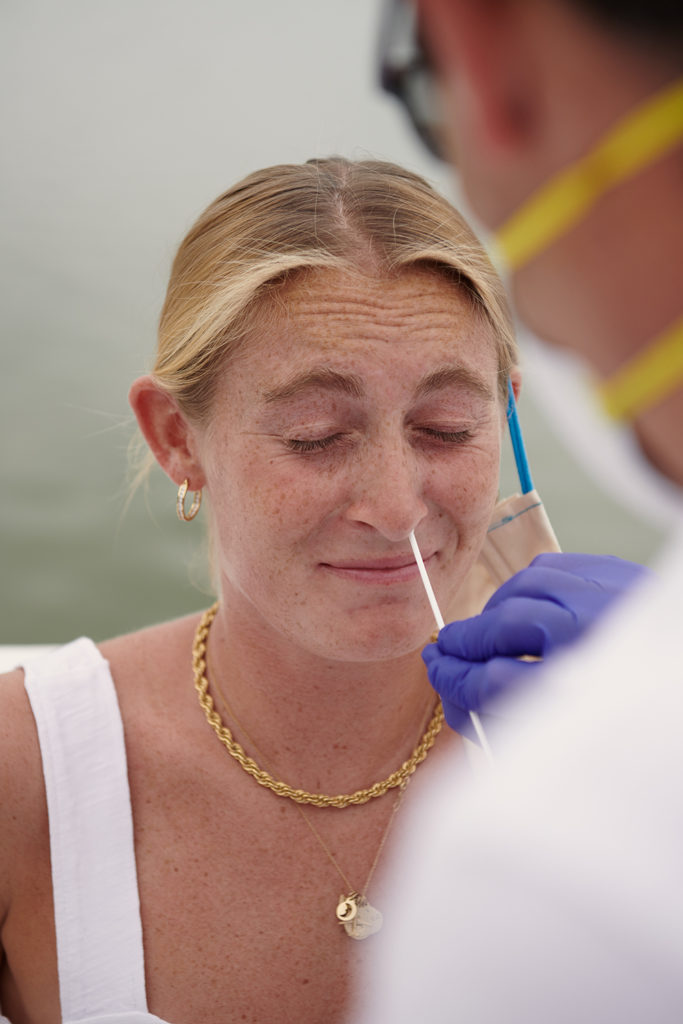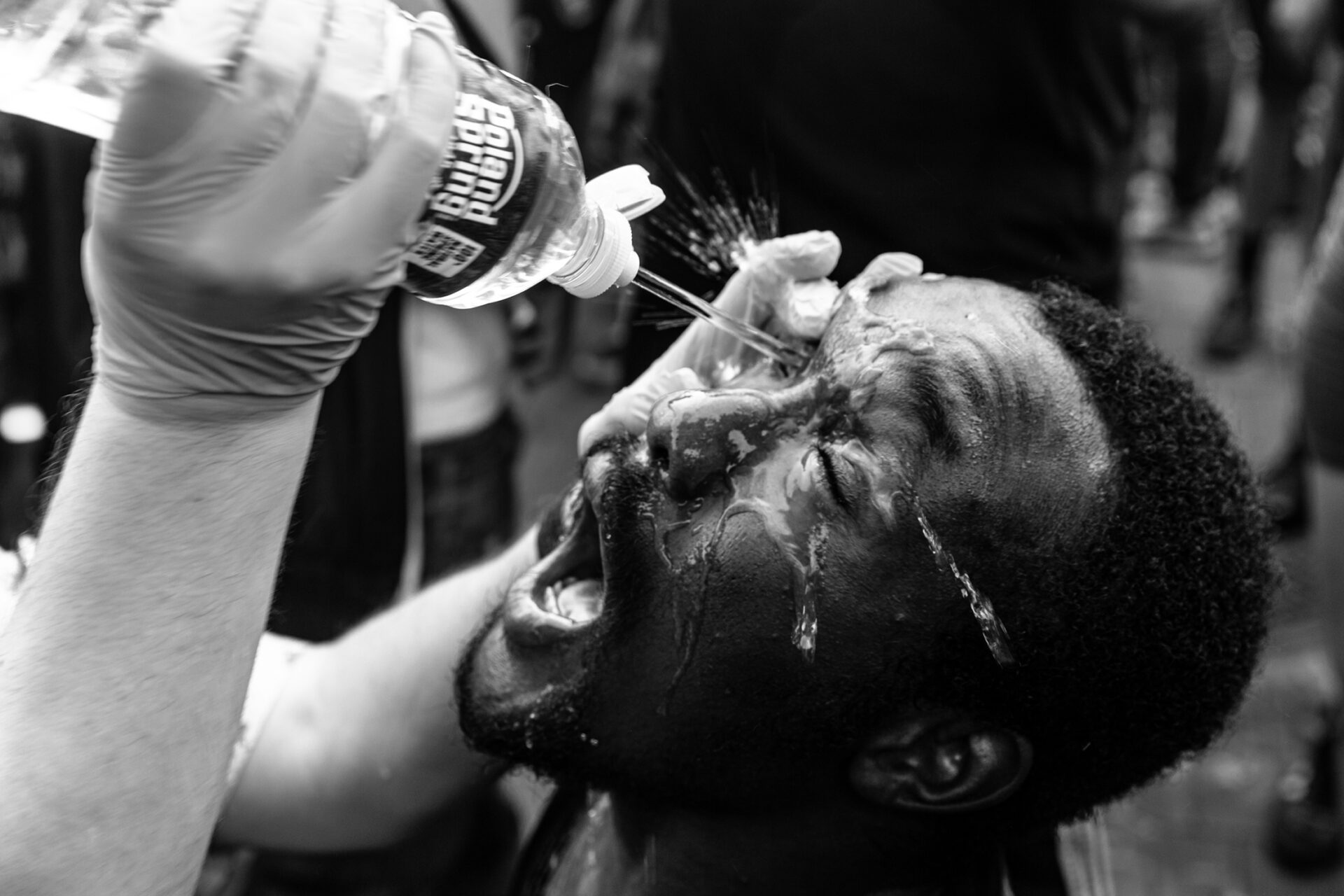

by Jonathan Vatner
A visual journey through historic moments we’ll never forget
If history is a living document, it was never more alive than in 2020. A global pandemic raged, George Floyd’s killing ignited a national reckoning with racism, and households worldwide adapted to surreal new routines marked by physical isolation and virtual connection. We awoke each morning, fearful of what the news might bring.
FIT’s photographers—alumni, students, and faculty—captured each riveting moment.Their remarkable images, many of which were published in leading magazines and newspapers, demonstrate the extraordinary artistic vision cultivated in FIT’s Photography program. Student Maiya Imani Wright’s image below reveals the passion and grief of a Black Lives Matter protester; other images depict anti-mask demonstrations, the once-bustling Oculus in Lower Manhattan devoid of life, and a Queens funeral home, suddenly inundated. Taken together, the photographs in these pages tell the story of our year, one of turmoil, desperation, bravery, and defiance.
Featured Photo (top): Student Maiya Imani Wright ’21 captured this photograph as a protestor was being treated by student doctors and nurses after being pepper-sprayed by police in Brooklyn in May 2020. “I witnessed everyone jumping in with first-aid kits, student doctors and nurses all coming together,” she says. “I see it as ‘Look what they are doing to us Black people and our allies, peacefully protesting, trying to make a change.’ And, ‘Look how the young people can all come together to protect each other, regardless of race.’” The photo was published in New York magazine.
MAIYA IMANI WRIGHT ’21
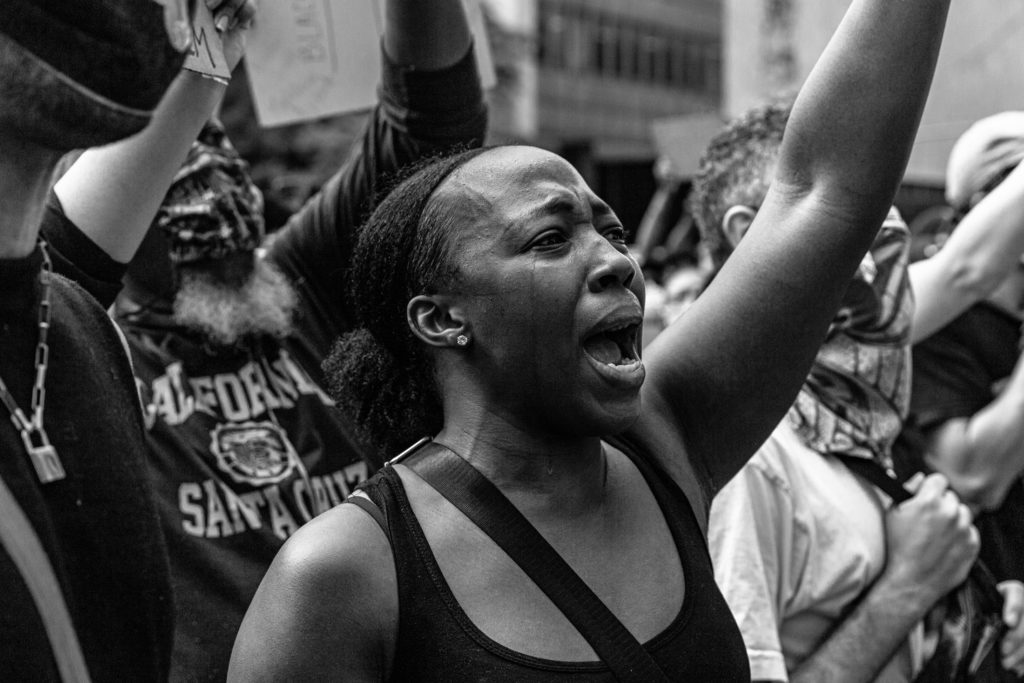
Documenting a protest in Foley Square in Lower Manhattan on May 29, Imani Wright was moved by this unknown protester’s tear. “The one teardrop that is falling from their face expresses how the majority of the world is feeling,” she says.
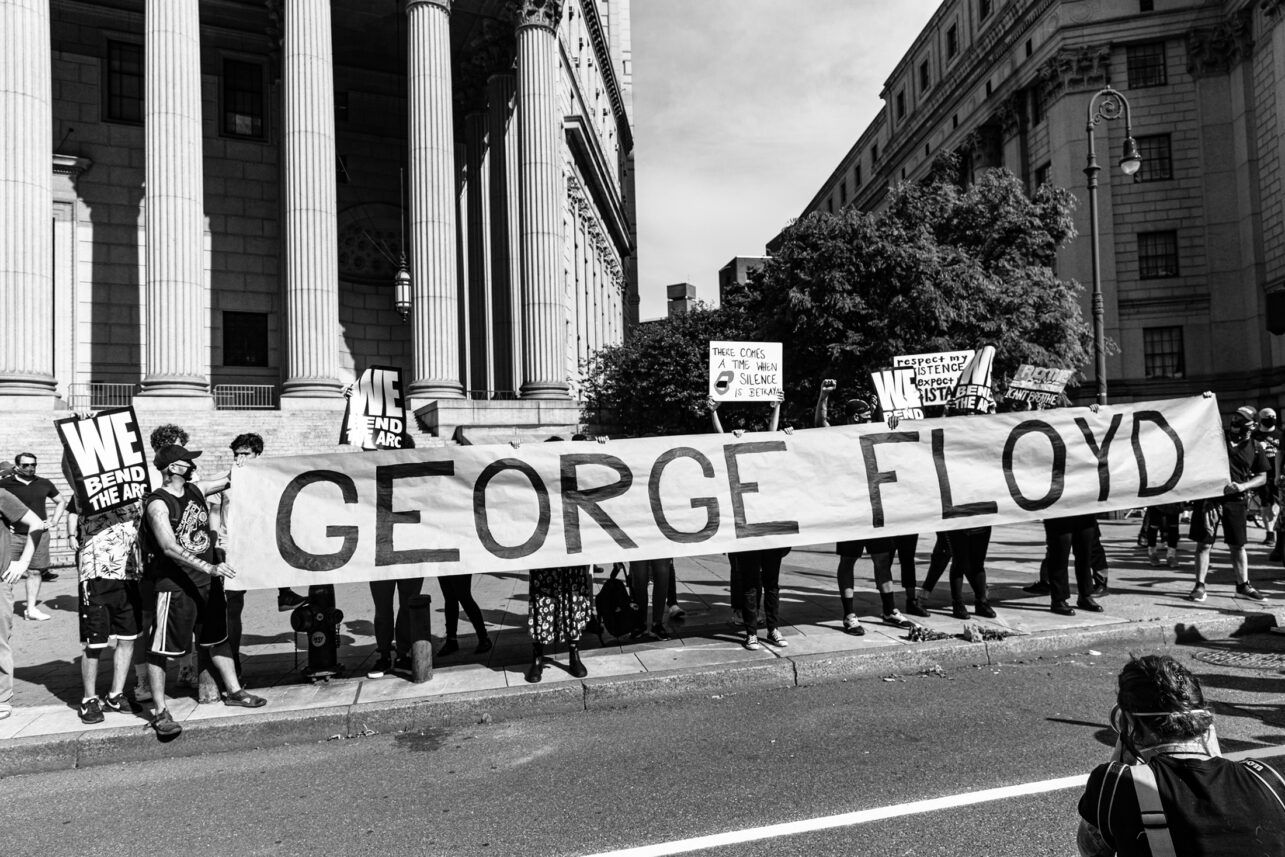
A peaceful rally in Foley Square, Manhattan. “When I began going out to protest about two days after the George Floyd murder, it was extremely baffling to me that everyone around me protesting for my human rights, in the middle of a pandemic, were all risking their lives, their families’ lives, and other high-risk people’s lives. Yet they were still fighting for change—it is so powerful. That is when I knew that how I tell this story through Black eyes mattered the most.”
ALEX GOLSHANI ’16
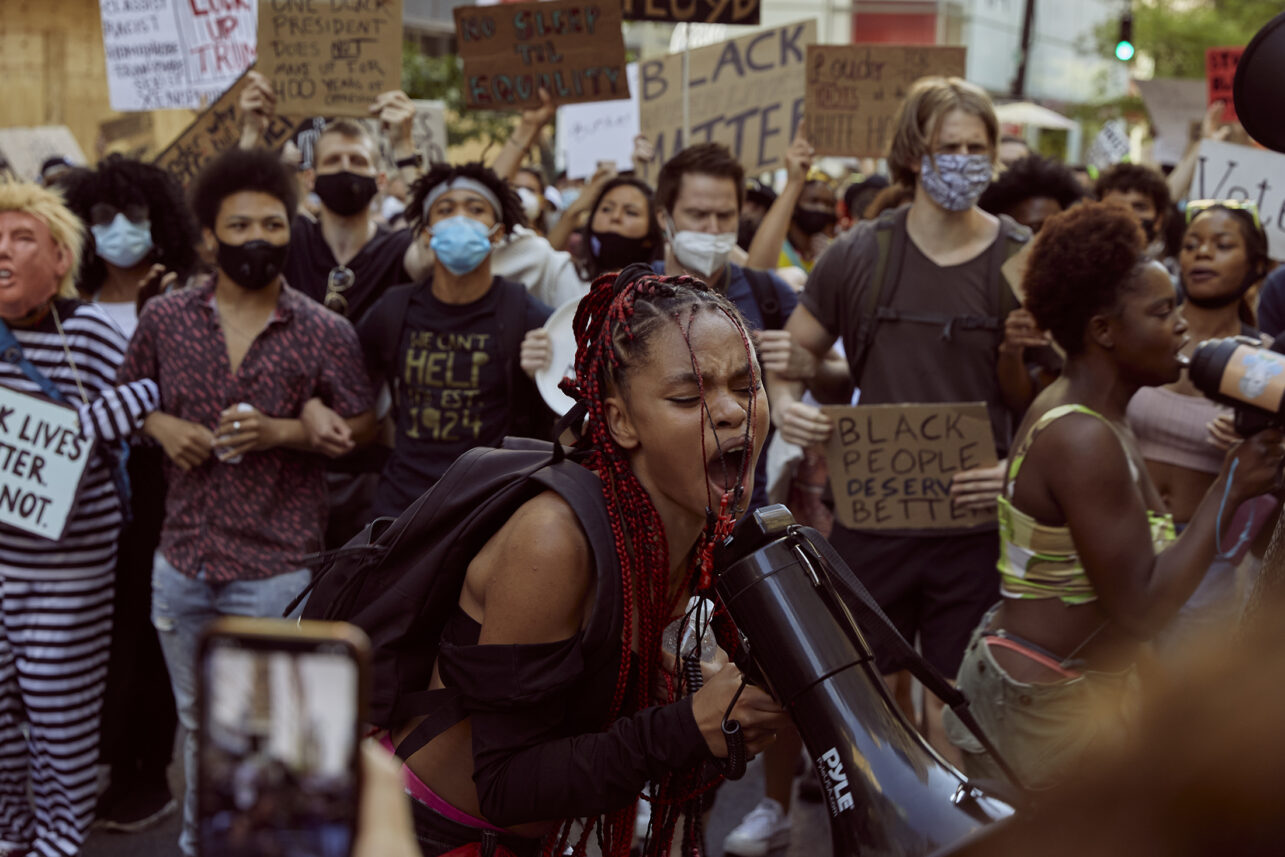
This image of New York–based activist Livia Rose Johnson protesting the president on July 14, his birthday, was published on the cover of The Point, a renowned literary magazine. “This year has been challenging, heartbreaking, and eye-opening,” Golshani says.
AMY LOMBARD ’12
Lombard documented protests against mask mandates, lockdowns, and alleged voter fraud in Boston and Bethany Beach, Delaware. Another photo from this series was published in The Atlantic.
“I started photographing these events after I personally recovered from COVID-19 myself,” she says. “I remember being sick in my bedroom seeing pictures on social media of these protests starting to pop up, and just feeling bewildered at the notion that people thought this was a hoax.”
JOE CARROTTA ’17
Both images below appeared in The New York Times. “This year brought on a lot of challenges,” Carrotta says. “Everyone’s faces are half-covered during portraits. My mindset shifted to convey my subjects’ emotions just through their eyes.”
Left: When the pandemic began, Dan Schonfeld tried to secure 100,000 masks from China to sell at cost to hospitals. Right: Amanda Seekamp, in charge of guest relations at the Surf Lodge in Montauk, New York, gets a rapid COVID-19 test.
VINCENT TULLO ’16
For a series of virtual tours, the Times asked Tullo to photograph the city in lockdown.

This shot of the Oculus, the normally hectic Lower Manhattan transit hub, communicates the profound quiet. He says, “I’ve lived in New York my whole life and have never seen it so empty and desolate.”
VICTOR LLORENTE ’19

Llorente shot this image of the New York Stock Exchange being cleaned for an April feature in The New York Times. Building management “decided to do a deep cleaning of the space that lasted eight hours,” he says. “A couple of days later, the floor was closed for the first time in its 228-year history.”

Patrick Kearns, funeral director of the Leo. F. Kearns Funeral Home in Queens, in a room full of caskets, shot for the Times. “The funeral home was so busy that they had to buy a giant refrigerated trailer to store bodies,” Llorente says.
ELIZABETH BICK, ADJUNCT INSTRUCTOR
When FIT ceased in-person instruction in March, Bick flew home to Houston. During her 14-day quarantine, to keep distance from her at-risk parents, she drove the empty streets, snapping photos from inside her car. “I felt this strong sense that I’m a photographer and this is a historical moment, so I should photograph it,” she says.
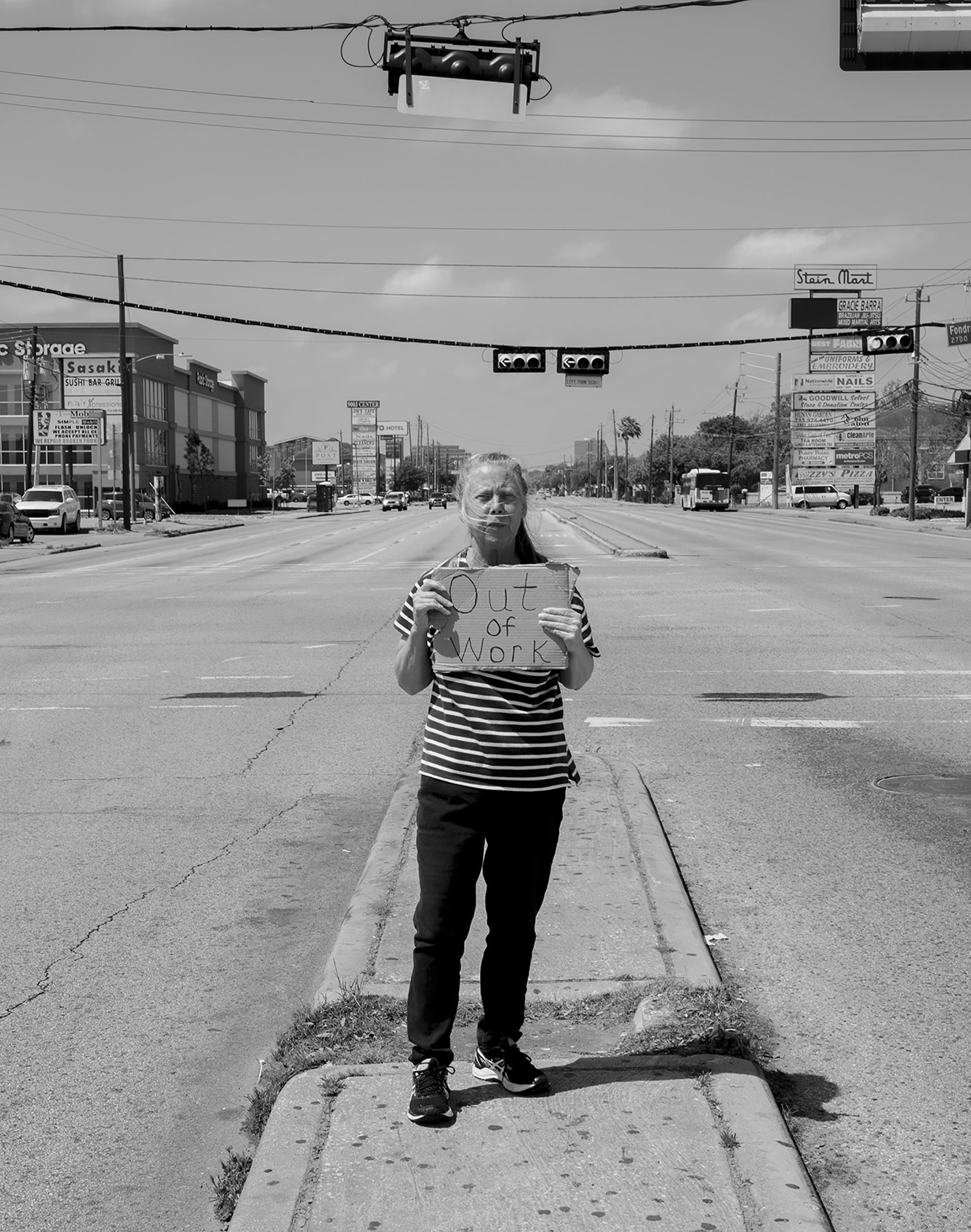
When she came across the woman with the sign, her heart broke. “She looked so much like my mother.” Bick sent a portfolio to the editors at The Atlantic, and they published this image.
Soon after, Time asked her to photograph Yolanda Fisher, a school cafeteria worker in Dallas, for an issue devoted to heroes of the pandemic. Fisher had continued to hand out lunches even after the school shut down, to people who might otherwise have gone hungry.
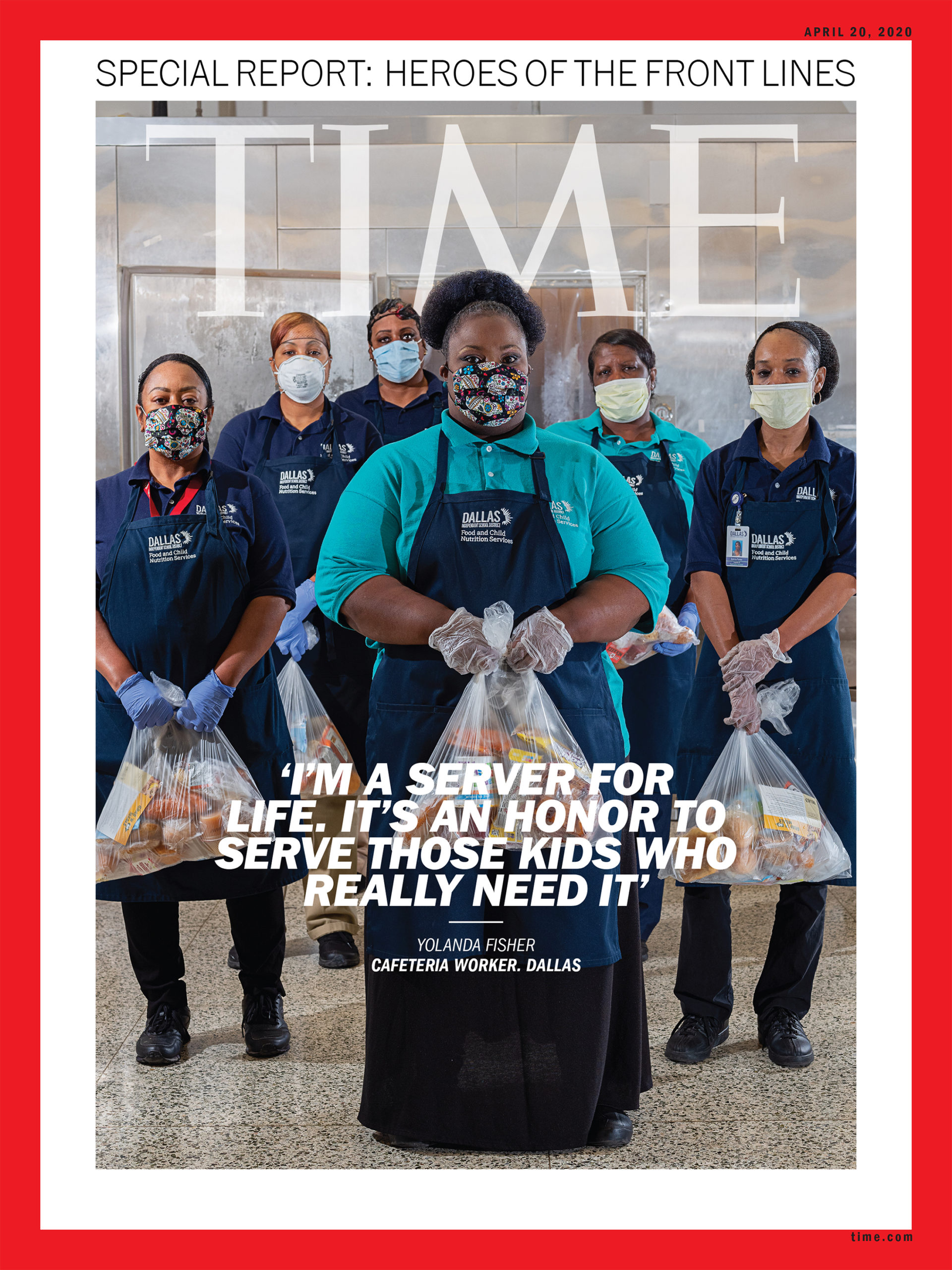
Toward the end of the year, Bick’s editor at the Times asked her to document a COVID-19-era wedding. Bick stuck around for communion. A trained ballet dancer, she saw beauty in the ritualized movement.
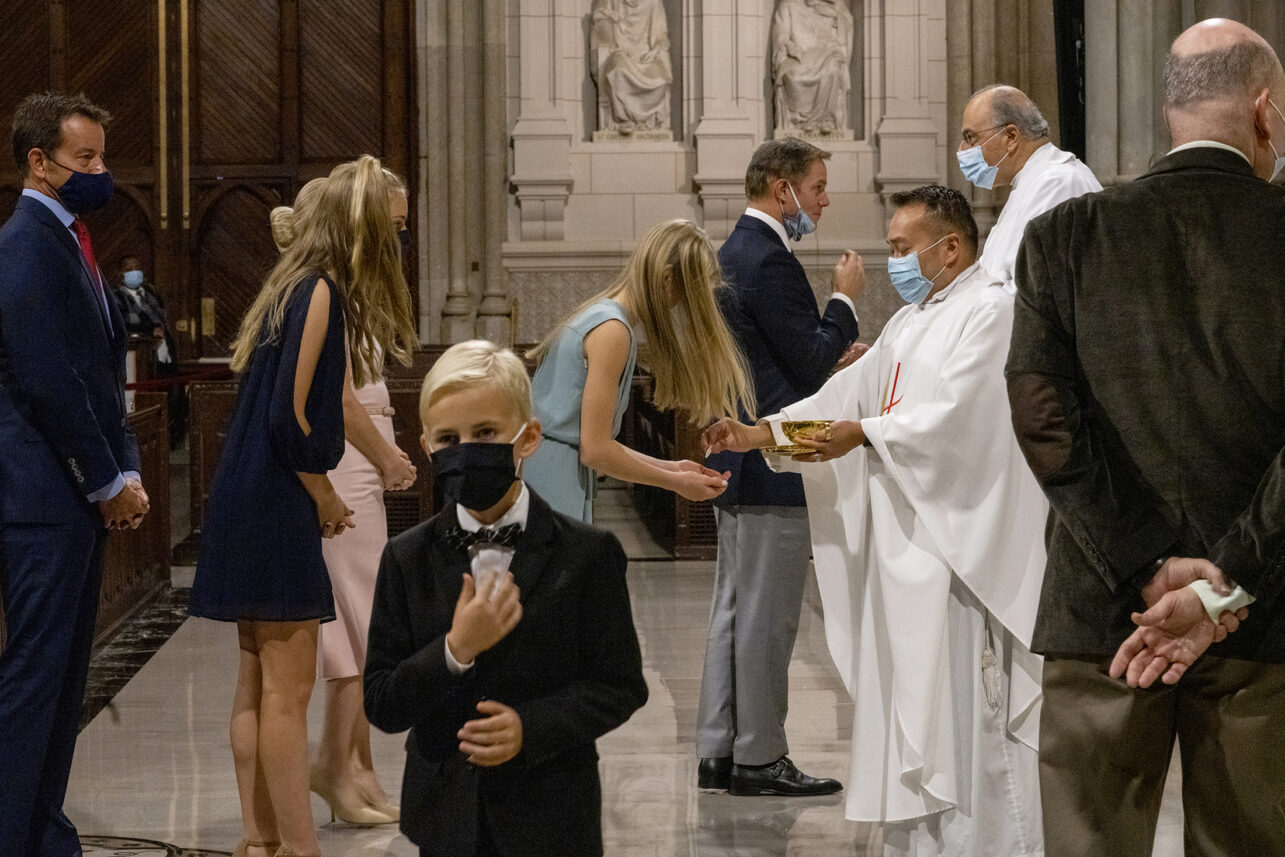
“It was one of those perfect choreographies with a lot going on: the innocence of the boy’s face, and people trying to handle their masks to take the sacrament.” Though the story was about the wedding, not the Mass, the Times ran it anyway.
SEAN HEMMERLE, ADJUNCT INSTRUCTOR
Hememerle captured New York City on lockdown in the spring and summer of 2020.
“I photograph the world around me to reexamine it later, to memorialize a small sliver of time, to better understand complexities not immediately understood, to stretch a 15th of a second into a chapter of clarity,” he says.
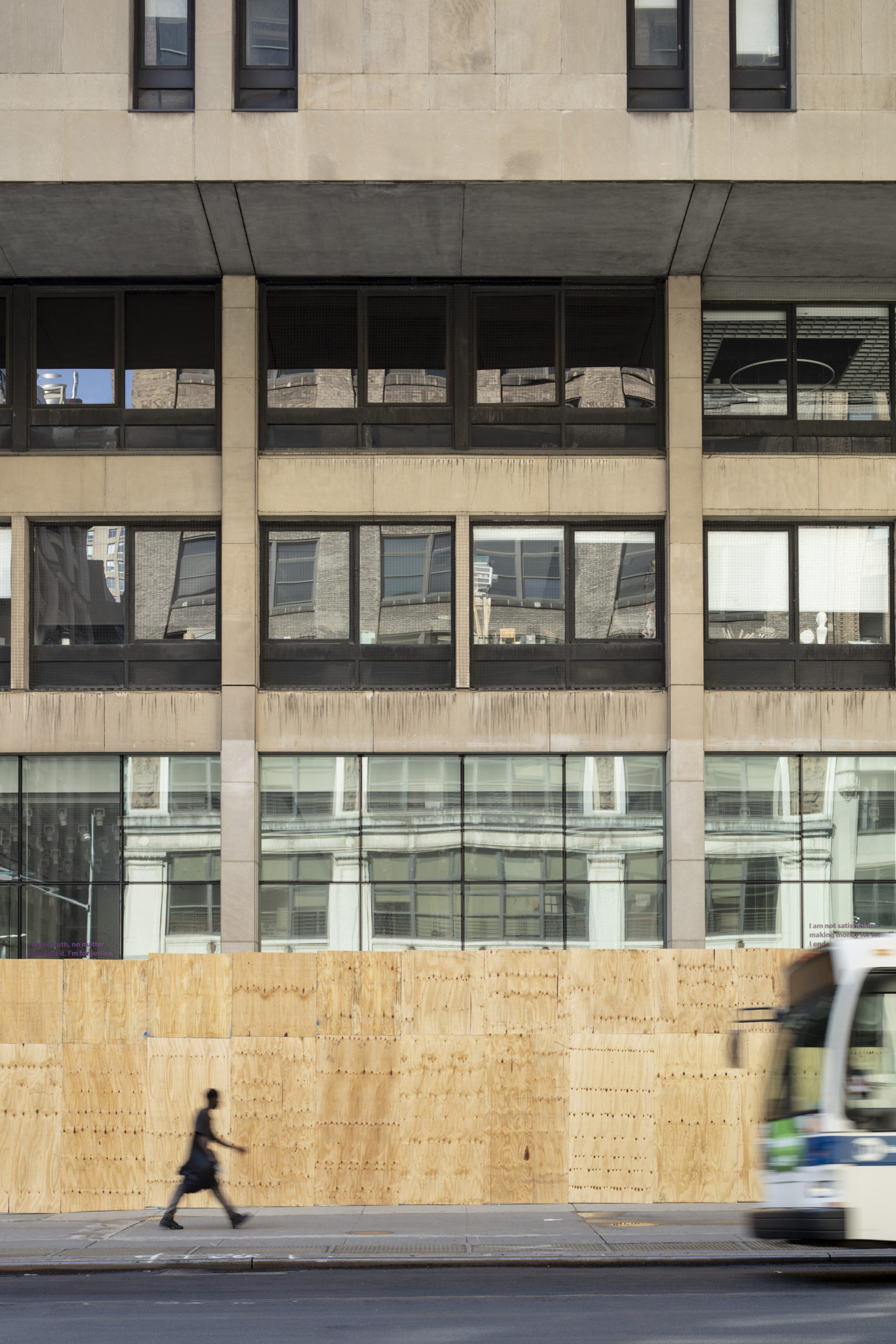
“I was hoping for just such a moment of serendipity when a man walking briskly entered my frame, his arm swinging purposefully, dressed all in black. Considering the existential crisis we were laboring beneath, it felt appropriate that Giacometti should emerge on the streets of New York City, trotting just ahead of a Black Lives Matter protest march.”
Hemmerle’s images were displayed in a solo exhibition in Cologne, Germany.
